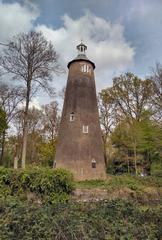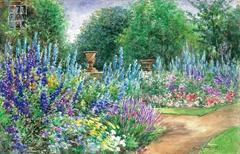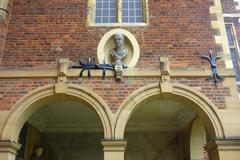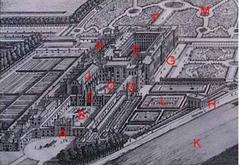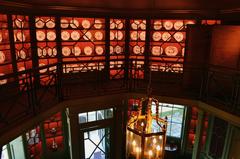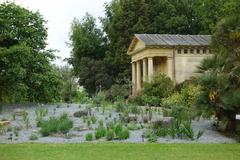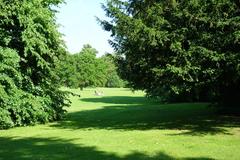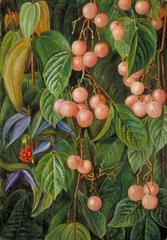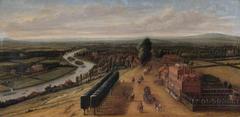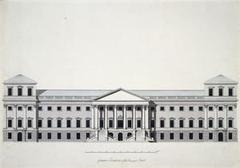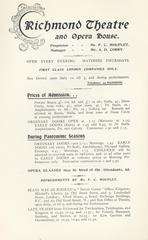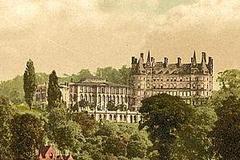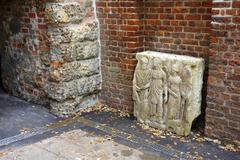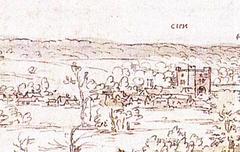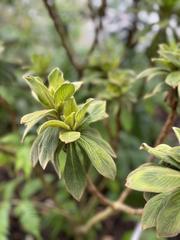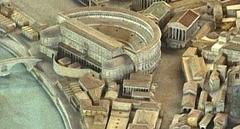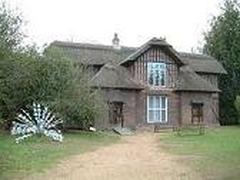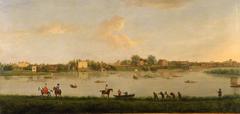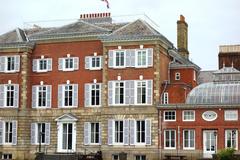Blue Plaque Commemorating Kurt Schwitters in Richmond: Visiting Hours, Tickets, and Visitor Guide
Date: 14/06/2025
Introduction
The Blue Plaque Scheme is one of the world’s most distinguished heritage initiatives, honoring the lives of remarkable individuals who have shaped British history and culture. Established in London over 150 years ago, the scheme connects the city’s architecture to the stories of its influential residents, marking their homes or workplaces with iconic blue ceramic plaques (English Heritage). Among these is the plaque commemorating Kurt Schwitters, a pioneering 20th-century German artist and founder of the Merz movement, who found refuge in Richmond after fleeing Nazi Germany.
This comprehensive guide explores the history and significance of the Blue Plaque Scheme, delves into Schwitters’ life and work in Richmond, and provides practical information for visitors—including location, accessibility, and nearby attractions. Whether you’re an art lover, a history enthusiast, or a curious traveler, the Kurt Schwitters blue plaque offers a unique window into artistic resilience and cultural memory.
Table of Contents
- Introduction
- History of the Blue Plaque Scheme
- Blue Plaques in London and Richmond: Visitor Information
- The Blue Plaque Scheme Beyond London
- Kurt Schwitters: Life, Art, and Exile in Richmond
- Visiting the Kurt Schwitters Blue Plaque
- FAQs
- Further Exploration and Resources
- References
History of the Blue Plaque Scheme
Origins and Early Years
The idea for commemorative plaques in London was first proposed by William Ewart MP in 1863. By 1866, the Society of Arts (later the Royal Society of Arts) began marking notable residences. The earliest surviving plaque honors Napoleon III. During the Society’s 35-year stewardship, 35 plaques were installed, focusing primarily on literary and political figures like John Keats and Edmund Burke (English Heritage).
Expansion and Administration
In 1901, the London County Council (LCC) assumed responsibility, formalizing selection criteria and standardizing the famous blue ceramic design by 1921. The Greater London Council (GLC) took over in 1966, expanding the scheme into additional boroughs and honoring a wider range of figures, including Sylvia Pankhurst and Mary Seacole. English Heritage has managed the scheme since 1986, adding hundreds of plaques and ensuring its preservation through public and charitable support (English Heritage).
Criteria and Selection Process
Eligibility for a blue plaque requires that the individual has been deceased for at least 20 years and has a significant association with the marked location—typically where they made a lasting contribution to their field. Nominations are reviewed by the Blue Plaques Panel, which evaluates the historical significance and the strength of the connection between the person and place (BBC News).
Purpose and Cultural Impact
The Blue Plaque Scheme celebrates the achievements of individuals who have shaped British—and world—history. By marking the buildings where these figures lived or worked, the plaques serve as accessible markers of cultural heritage, sparking public interest and often aiding the preservation of historic buildings (English Heritage). Over time, the scheme has broadened to include a diverse array of honorees, reflecting evolving social values and highlighting the achievements of artists, scientists, musicians, athletes, and social reformers.
Blue Plaques in London and Richmond: Visitor Information
Blue Plaques can be found throughout London, including the borough of Richmond, where Kurt Schwitters’ plaque offers a tangible link to the artist’s story. English Heritage provides an interactive map to help visitors plan self-guided tours. Guided walking tours are also available, providing rich context and historical anecdotes (Art UK).
Visitor Tips:
- Plaques are on exterior walls and viewable at any time, free of charge.
- Comfortable walking shoes are recommended.
- Guided tours may be booked via local tourism sites or English Heritage.
- Some plaques are in residential areas—please respect privacy.
The Blue Plaque Scheme Beyond London
While English Heritage’s official scheme is limited to London, many UK towns and cities have adopted similar commemorative markers. In 2023, proposals were made to expand the scheme nationwide under Historic England, enabling more communities to honor local heroes and events (BBC News).
Kurt Schwitters: Life, Art, and Exile in Richmond
Kurt Schwitters (1887–1948) was a German artist and the originator of the Merz movement, a radical form of collage and assemblage using found objects. Persecuted by the Nazis for his avant-garde art, Schwitters fled Germany in 1937, lived briefly in Norway, and arrived in the UK in 1940. After internment on the Isle of Man, he settled in London, living at 39 Westmorland Road, Barnes, in the borough of Richmond (Art UK).
During his time in Richmond, Schwitters continued creating art despite personal and professional hardships. He adapted his Merz technique to the British context, using local materials and engaging with the wartime environment. His Richmond period is recognized for its creative resilience and integration of new influences (Whitehot Magazine).
Visiting the Kurt Schwitters Blue Plaque
Location and Directions
- Address: 39 Westmorland Road, Barnes, London SW13 9NR
- Transport: Barnes railway station (approx. 10-minute walk), several bus routes serve the area.
- Map and guides: English Heritage map, Richmond Plaque Guide.
Visiting Hours and Access
- Access: The plaque is on the exterior of a private residence and can be viewed from the street at any time.
- Admission: Free; no ticket required.
- Accessibility: The street and pavement are wheelchair-accessible.
- Visitor etiquette: Please respect residents’ privacy; do not enter private property.
Guided Tours
Local organizations and tour companies occasionally offer walking tours that include the Schwitters plaque and other nearby sites. For the latest offerings, check the Richmond Tourism website.
Nearby Attractions
- Barnes Wetland Centre: A nature reserve perfect for a relaxing stroll (Barnes Wetland Centre).
- Richmond Park: Expansive green space for walking and wildlife spotting.
- Richmond Riverside: Scenic paths and riverside cafes.
- Other Blue Plaques: Explore plaques dedicated to Virginia Woolf, Capability Brown, and more (Visit Richmond – Blue Plaques).
Visitor Etiquette
- Photography: Allowed from the street; be discreet.
- Guided tours: Book in advance if joining an organized group.
- Amenities: Cafes and shops are within walking distance.
FAQs
Q: Can I enter Kurt Schwitters’ former residence?
A: No, it is a private home. The plaque is visible from the street.
Q: Is the site wheelchair accessible?
A: Yes, the pavement is accessible.
Q: When is the best time to visit?
A: The plaque is viewable year-round; spring and summer are ideal for walking tours.
Q: Are guided tours available?
A: Yes, check with Richmond Tourism or English Heritage.
Q: Are there related exhibitions or events?
A: Occasionally, local galleries or museums offer exhibitions on Schwitters or related themes. Check Tate and other major institutions.
Further Exploration and Resources
- Learn more about the Blue Plaque Scheme.
- Delve into Schwitters’ art at The Art Story and Art UK.
- Plan your visit to nearby blue plaques with Visit Richmond.
- Download the Audiala app for audio guides and themed walking tours.
References
- English Heritage – Blue Plaques: History and Scheme
- Timeout – London’s Blue Plaques Map
- Art UK – Artists and Places: Kurt Schwitters in England
- English Heritage – Blue Plaques in Richmond
- BBC News – Nationwide Blue Plaque Scheme Proposal
- The Art Story: Kurt Schwitters
- Visit Richmond – Blue Plaques in Barnes
